The 20 Most Beautiful Churches in Europe

Few factors have played more heavily into European architecture than Christian worship. For hundreds and hundreds of years, kings, pontiffs and nobles have poured countless resources into to erection of churches that stand as some of the most impressive man-made structures to ever exist.
We’ve assembled a list of 20 we find to be the most beautiful. By no means is this an exhaustive list, and the order in which they’re ranked is very much a subject for debate. Feel free to let us know what you think in the comments section below!
1. Sagrada Familia, Barcelona (Spain)

Construction of The Basílica i Temple Expiatori de la Sagrada Família or Basilica and Expiatory Church of the Holy Family began in 1882 and is ongoing to this day. Designed by Catalan architect Antoni Gaudi, the world famous structure has attracted controversy and acclaim throughout the years. It’s a UNESCO World Heritage Site and as of 2010 a basilica. Construction was recently projected to be completed in 2026, the centennial anniversary of Gaudi’s death. When Gaudi was asked about the lengthy duration of the construction he famously responded, “My client is not in a hurry.”
2. Basilica di Santa Maria del Fiore, Florence (Italy)
Construction of The Cattedrale di Santa Maria del Fiore or “Cathedral of Saint Mary of the Flowers” spanned from 1296-1436. Located in Piazza del Duomo, the cathedral complex includes the Baptistery and Giotto’s Campanile, which comprise a UNESCO World Heritage Site covering the historic centre of Florence. The basilica is one of Italy’s largest churches. The dome was the largest in the world until contemporary development of new structural materials allowed for larger structures to be erected. To this day it’s the largest brick dome ever constructed.
3. Notre Dame de Paris, Paris (France)
Notre-Dame de Paris or Our Lady of Paris is the Cathedral of the Archdiocese of Paris located on the eastern half of the Île de la Cité. Construction of the world-famous church spanned from 1160-1345. Parts of the church were severely damaged during the French Revolution in the 1790’s and have since undergone restoration projects both in 1845 and 1991. Notre-Dame was among the first buildings in the world to use flying buttresses (which weren’t part of the original design but were added to deal with structural issues encountered during construction). The cathedral’s treasury houses several sacred church artifacts including the Crown of Thorns, a fragment of the True Cross and one of the Holy Nails.
4. St. Peter’s Basilica, Vatican City
Considered to be the largest church in the world, St. Peter’s Basilica was constructed from 1506 to 1626 and is believed to be built on the burial site of St. Peter, one of Jesus Christ’s apostles and the first Catholic Pope. This incarnation of St. Paul’s replaced previous churches built on the same spot dating back to the Roman Emperor Constantine. Designed by Michelangelo and several other prominent Renaissance architects, it attracts Catholic pilgrims from all over the world as well as lovers of Renaissance art and architecture.
5. Duomo de Milano, Milan (Italy)
Duomo di Milano or The Cathedral of Milan is the 2nd largest church in Italy and the 5th largest in the world. Construction of the basilica spanned nearly 600 years beginning in 1387 and not officially ending until 1965. Napoleon Bonaparte was crowned King of Italy in the church in 1805, and a statue of Napoleon sits on top of one of the spires as a form of thanks to his patronage during the final stage of the facades’ completion. Some of the most prolific names in literature have gained inspiration from visiting the Duomo over the years including Percy Shelley, Lord Tennyson, Oscar Wilde and Mark Twain who dedicated chapter 18 of Innocents Abroad to the cathedral.
6. St Paul’s Cathedral, London (England)
St. Paul’s Church, the Anglican Cathedral and Seat of the Bishop of London, sits at Ludgate Hill, the highest point in the City of London. It was the tallest building in London from 1710 to 1962. Construction of the church began in 1675 after the Great Fire of London gutted the previous St. Paul’s and the church was first consecrated for use in 1708. St. Paul’s, dedicated to St. Paul the Apostle, has housed Royal English ceremonies such as Prince Edward and Lady Diana’s wedding, Winston Churchill’s Funeral Services, peace services marking the end of the first and second world wars, and the Gold and Diamond Jubilee of Elizabeth II. The church is also a working church with hourly prayer and daily services.
7. St. Stephen’s Cathedral, Vienna (Austria)
Constructed from 1137 to 1160 Stephansdom or St. Stephen’s Cathedral is the seat of the Archdiocese of Vienna. The church was dedicated in 1147 to Saint Stephen in the presence of Conrad III of Germany, Bishop Otto of Freising, and other German nobles who were about to embark on the Second Crusade. The church has hosted weddings and funerals of some of the most notable names in European history and culture including Ferdinand I Holy Roman Emperor, Wolfgang Amadeus Mozart and Antonio Vivaldi. The Cathedral is also featured on the Euro 10-cent coin.
8. Basilique du Sacré-Coeur de Montmartre, Paris (France)
Basilique du Sacré-Coeur de Montmartre or the Basilica of the Sacred Heart is located on the summit of the butte Montmartre, the highest point in the city. Construction of the church began in 1875 and ended in 1914 (its first consecration was in 1919 after the end of World War 1). The design of Sacré-Coeur was inspired by a speech by Bishop Fournier attributing the defeat of the French in the Franco-Prussion war to a divine punishment after a century of “moral decline” since the French Revolution.
9. Westminster Abbey, London (England)
Collegiate Church of St Peter at Westminster, better known as Westminster Abbey, was originally constructed as a royal burial church by King Edward the Confessor from 1042-1090, but it was rebuilt in its current form by Henry III in 1245 with construction finishing in 1517 during the reign of Richard II. Royal coronations and weddings have occurred in Westminster Abbey since 1066 with William the Conqueror all the way up to 2011 with Prince William’s wedding to Kate Middleton. The Abbey is a UNESCO World Heritage Site and renowned as one of the most notable religious buildings in the UK.
10. Mosteiro dos Jerónimos, Lisbon (Portugal)
The Jeronimos Monastery is located near the shore in the parish of Belem in Lisbon, Portugal. It was constructed from 1501-1601. Vasco de Gama and his crew spent the night there before their departure to the orient in 1497 to pray for good fortune and safe voyages. It was designated a UNESCO World Heritage Site in 1983 along with the nearby Tower of Belem. It stands as one of the most notable landmarks in Portugal housing the tomb of Vasco de Gama and having hosted important historical events such as the The Treaty of Lisbon in 2007.
11. Meteora, Kalambaka (Greece)
The Meteora or middle of the sky are a group of six monasteries housed on the pinnacle of sandstone rock pillars on the Plain of Thessaly in Central Greece, housing orders of monks in the Greek Orthodox church. Monastic orders have inhabited the region since the 9th century CE but the exact date is unknown when the first ascetic community was established. The monasteries are intentionally difficult to reach both to encourage their cloistered lifestyle and to protect their faith tradition from the religious persecution of invaders over the centuries. The Meteora is UNESCO World Heritage Site.
12. Le Mont Saint-Michel, Normandy (France)
Le Mont-Saint-Michel or Saint Michael’s Mount is a religious island commune in Normandy France housing a monastery of the same name. A UNESCO World Heritage site, it attracts over 3 million visitors every year. The first monastery was built on the island in the 8th century after according to legend, the Archangel Michael visited St. Aubert, the bishop of Avranches and instructed him to build a church on the isle. Aubert ignored the instructions repeatedly until Michael burned a hole in his forehead. The island has played strategic role in military battles over the years and at times has been used as a prison.
13. Catedral de León, León (Spain)
The Cathedral of Leon was built on the site of Roman Baths dating back to the 2nd century. King Ordono II of Leon demolished the baths and build a palace in its place. After he defeated the Arabs in 917, he offered his palace to God as a sign of gratitude for the victory and built the first cathedral. That cathedral fell into disrepair and was eventually replaced two times over with the third structure beginning in 1205, finishing in 1302 and standing today.
14. St. Basil’s Cathedral, Moscow, Russia
The Cathedral of Vasily the Blessed, officially known as the Cathedral of the Intercession of the Most Holy Theotokos on the Moat and more commonly known as St. Basil’s Cathedral in Red Square, Moscow, Russia was commissioned by Ivan the Terrible and constructed from 1555-1561 as a commemoration of the capture of Kazan and Astrakhan. Its design is modeled after a bonfire shooting flames into the sky and is completely unique in Russian architecture. It was converted to a museum in 1928 as part of the Soviet Union’s mandatory state secularist campaign. It was named a UNESCO World Heritage Site in 1990.
15. Hagia Sophia, Istanbul, Turkey
Hagia Sophia (Holy Wisdom) now sits as a museum in Istanbul, Turkey, but functioned as a Greek Orthodox Basilica from its construction in 537 until 1453 when it became a mosque. In 1931 it was secularized and opened as a museum as it functions today. Its dome is its most distinctive characteristic and the church is considered to be the epitome of Byzantine architecture. It attracts over 3 million visitors each year.
16. Basilica di San Marco, Venice, Italy
Basilica di San Marco or St. Mark’s Basilica was completed in 1092 and serves as symbol of Venetian opulence and wealth, earning the title of Church of Gold. St. Mark’s is the most well-known church in the city and one of the best known examples of Italo-Byzantine architecture. Located at the eastern end of the Piazza San Marco, adjacent and connected to the Doge’s Palace, it was originally the chapel of the Doge, and has been the city’s cathedral since 1807.
17. St. Stephen’s Basilica, Budapest, Hungary
Completed in 1905, St. Stephen’s Basilica is named after Stephen I, the first King of Hungary (975-1038) whose right hand is housed in the reliquary. At 96 meters tall, it stands equal in height with the Hungarian Parliament building, symbolic of spiritual and worldly thinking holding equal weight. The basilica is home to world-class musical performances on a regular basis featuring organists and choirs.
18. Church of Our Lady, Munich (Germany)
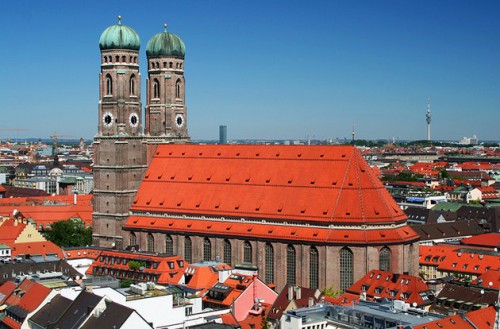
Frauenkirche or The Catholic Church of Our Blessed Lady can hold up to 20,000 people. Constructed in 1494, its two towers shape the city’s skyline. The two domes that sit atop the towers are modeled after the Dome of the Rock in Jerusalem. Famous monarchs are buried in its crypt including Louis IV, Holy Roman Emperor. Both towers feature bells cast across several centuries, unlike any other church in Europe.
19. Hallgrimskirkja, Reykjavik (Iceland)
Hallgrimskirkja or the church of Hallgrímur is a Lutheran church in Reykjavik, Iceland named after Icelandic poet and clergyman Hallgrímur Pétursson(1614 to 1674), author of the Passion Hymns. It was constructed from 1945 to 1986. State Architect Guðjón Samúelsson’s was commissioned to design the church in 1937. He was inspired by the basalt lava flows of Iceland’s landscape. The church also serves as an observation tower; visitors can take an elevator to the top of the structure to observe the surrounding landscape and city.
20. Durham Cathedral, Durham, England
The Cathedral Church of Christ, Blessed Mary the Virgin and St Cuthbert of Durham better know as Durham Cathedral is an Anglican cathedral in Durham, England. The site is a UNESCO World Heritage Site and serves as one of the best known examples of Norman architecture. It was constructed from 1093-1133 and was featured in the Harry Potter Films serving as Hogwarts School of Witchcraft and Wizardry.
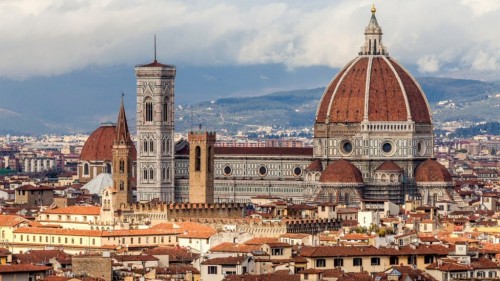
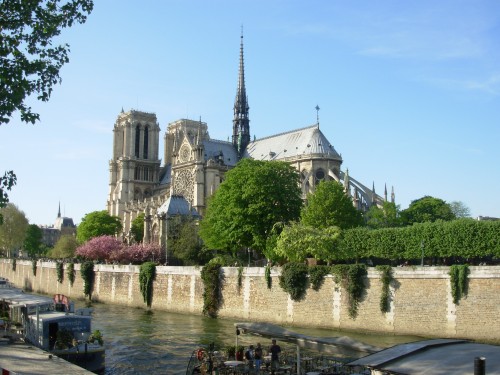
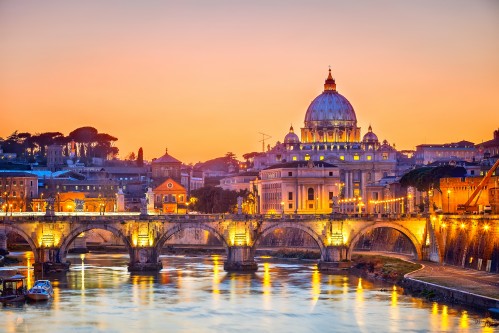
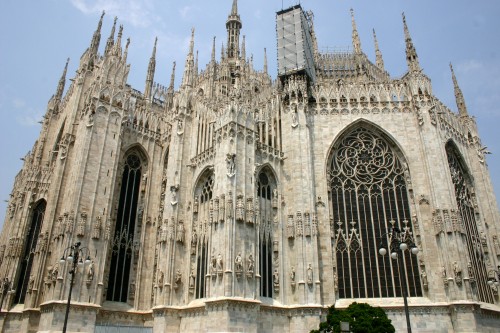
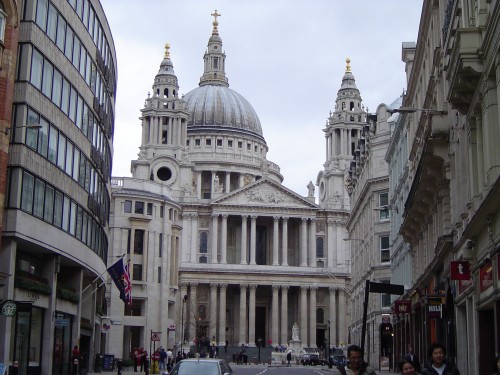
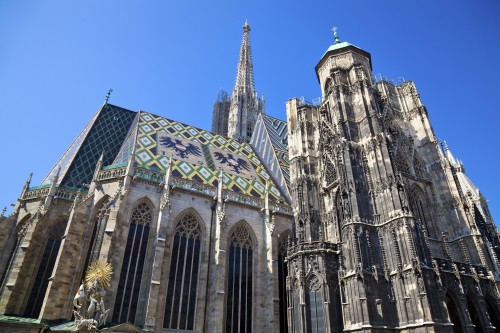
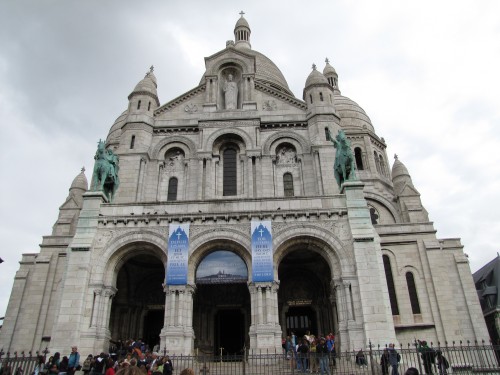

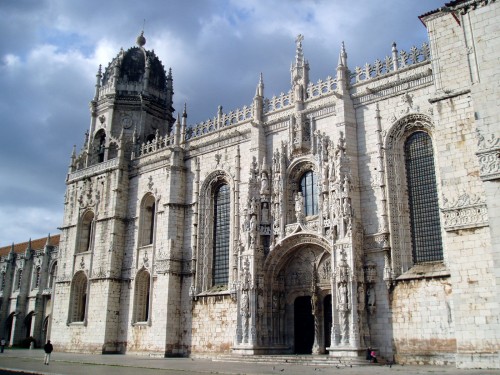
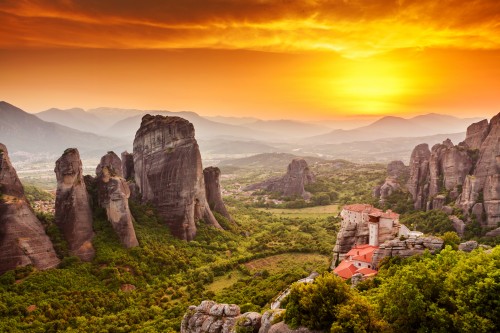




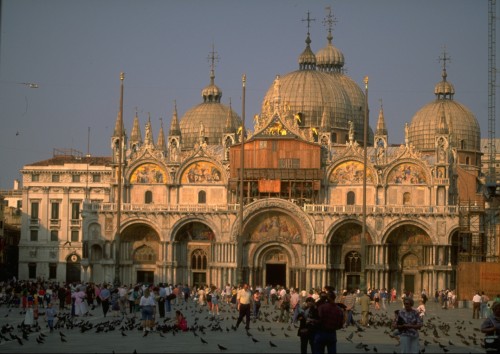
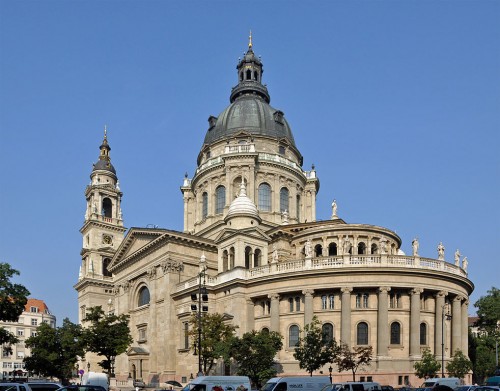
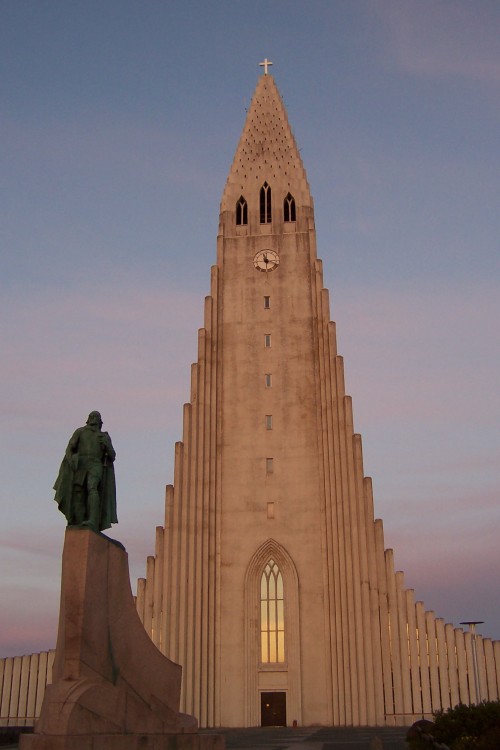
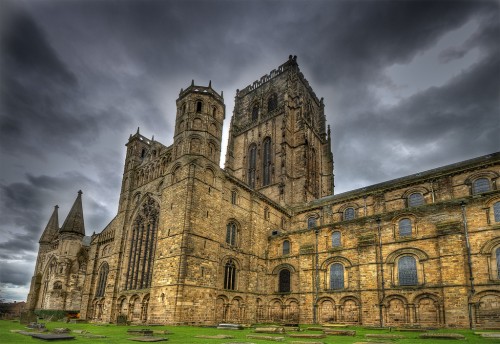











I love the cathedral of Toledo. It could definitely make the list.
Thanks to my travels with ACIS I’ve been to 7 of the top 10! Thanks ACIS!
The St Mary basilica in Krakow should be in the top 5.
St. Bavo’s Cathedral in Ghent is spectacular as is the Church of Our Lady in Brugge which houses the beautiful Brugge Madonna and Child by Michaelangelo.
How is strassburg not on the list?
https://en.m.wikipedia.org/wiki/Strasbourg_Cathedral